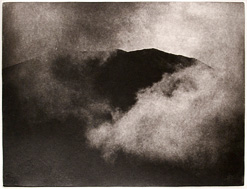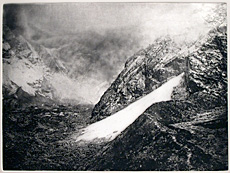Robert Capa Centennial / Gerda Taro Retrospective at Yokohama Museum
As the forces of a cataclysmic world conflict gathered in Spain in 1936, two young photographers, Robert Capa and Gerda Taro, responded to the besieged republican government’s call to arms. Fascist forces had bombed Guernica, the first aerial bombardment of civilians in history. Picasso’s monumental Guernica depicted the agony.

Picasso, Guernica
The Spanish poet Garcia-Lorca was murdered by fascist rebels in the early days of the war. The Spanish Civil War (1936 – 1939) called forth an international gathering of artists and writers unparalleled in modern times. Soon-to-be-famous luminaries including Orwell, Malraux, Hemingway, Auden, Spender, as well as Stalin’s future spies Philby and Blunt arrived along with legions of the Abraham Lincoln Brigade and other volunteers.
In the laconic prose of reportage, Hemingway’s For Whom the Bell Tolls related the heroism and the atrocity of war, the character of Pilar modeled on the real-life La Passionaria in David Seymour’s memorable photo.

David Seymour, La Passionaria
Robert Capa’s photographs documented the face of war, even unto the moment of death of a Loyalist soldier shot by a sniper. Capa was always there, in the thick of the action, the original heroic war photographer.

Robert Capa, Spain, 1936
He covered five wars, the camera his only weapon. Born Endre Erno Friedmann in 1913, he fled his native Hungary in 1931, finding refuge in Paris. There, on photo-assignment for a Swiss life insurance company, he met Gerta Pohorylle, a German Jewish refugee who was teaching photography. Thus began one of the most storied romances of the 20th century.

Gerda Taro and Robert Capa
Two Jews on the run, exiled from their homelands, struggling to survive in the chaos of 1930s Europe, they were truly star-crossed lovers. In a brilliant stroke of both marketing and survival, they concealed their Jewish identities and merged themselves and their photographic work into one name: Robert Capa. She re-invented herself as Gerda Taro, the first name an adaptation of screen star Greta Garbo’s, the second from Taro Okamoto, a Japanese artist then studying anthropology and the occult at the Sorbonne. She used a square-format Rollei, while his camera was the rectangular-format Leica. Together they found that the same photos sold under the American-sounding name ‘Capa’ fetched three times the price paid with the name ‘Friedmann’.
With the call to arms in 1936, they made their way to Barcelona and the Spanish front, embracing their heroic destiny as graphic reporters of republican courage and fascist atrocities. Capa/Taro were fearless and lucky, living on the sheer adrenaline of risk-taking, somehow always getting the shot without getting shot. Gerda Taro kept her own identity, refused Capa’s offer of marriage, and later in 1936 started selling photos to European publications under her own name. They continued working together as comrades-in-arms, and kept company with others. Tragically after only a year, her luck ran out in a ‘friendly-fire’ collision of a tank with a car where she was perched on the running-board. She was only 26. She was accorded a martyr’s funeral in Paris by the French communist party, with tens of thousands of mourners in attendance.
But there’s more to the story. Gerda Taro’s negatives, taken on the day of her death and for several days before, disappeared completely. The war was not going well for the republican forces, which by 1937 were controlled by the Soviet Union. Any documentation of their defeat, or of the murders of deserters ordered by Stalin’s commanders in Spain, would have been most unwelcome. Robin Stummer, writing in the New Statesman, suggests that Gerda Taro’s death was no accident, that she was a targeted victim of Stalin’s henchmen. Future West German Chancellor Willy Brandt, who was also in Spain during the Spanish Civil War, believed Gerda Taro was already on Stalin’s hit list for her affiliation with the Sozialistische Arbeiterpartei Deutschlands, and warned her against staying on in Spain in 1937. Experiences such as these took much of the blush off the communist rose.
A continent away in Mexico, the intertwined arts of love and war wove a similar political strand in the relationship of Frida Kahlo and Diego Rivera. Rivera’s communist views did not prevent him and may even have helped him secure commissions from none other than the arch-capitalist John D Rockefeller. The diminuitive Kahlo, like Taro, was eclipsed by her more famous partner, who cast a very large shadow, as can be seen in this 1930s video: Kahlo and Trotsky enjoyed a brief affair, after which Trotsky was murdered with an icepick by another of Stalin’s agents.
The ultimate role model of wartime romance is that of Victor Laszlo (Paul Henreid) and Ilsa Lund (Ingrid Bergman) in ‘Casablanca’, with Rick Blaine (Humphrey Bogart) as the odd man out.

Paul Henreid as Victor Lazslo
Recognizing that ‘the troubles of three little people don’t amount to a hill of beans in this crazy world’, Rick’s sacrifice of Ilsa’s love, so that Laszlo can carry on with his leadership of the Resistance, is an act of the most excruciating heroism. After WWII, Robert Capa and Ingrid Bergman in real life became lovers for a year, another pair of exiles seeking solace.

Ingrid Bergman as Ilsa Lund
The Capa/Taro photos themselves, pried apart from the photographers’ legends, retain their shocking immediacy even as the scenes depicted have since become commonplace. There are photos of wounded soldiers in hideously contorted positions being carried on stretchers, of the sprawled-out dead, of funerals, of battle-plan conferences, of tanks, trucks, the amphibious landings on D-day, anxious refugees in Haifa.

Robert Capa, Haifa Refugees
Through five wars, the war-photo genre changed little, only the venues of the carnage moved — to China, Israel, and finally to Indochina, where Capa’s own luck ran out in 1954 when he stepped on a land mine. Gerda Taro’s street-ensembles, reflecting her lively engagement with her subjects, are more convincing than her battlefield scenes. Had she lived longer, she might have brought her intensity and fine personal touch to the arts of peace.

Gerda Taro, Street Musicians
The genre of war-photography moved on, in unsavory directions in some cases. Made-for-TV scenes became all the rage in the Mideast, Iraq, and elsewhere as the ‘new journalism’ obliterated the boundary between editorializing and reporting. The Capa/Taro photos remind us of a time of seeming moral certainty and just causes. Their exposure to war sharpened their senses, forcing concentration on the moment, knowing that death can come at any time — tragically soon for Gerda Taro. In the brief 17 years remaining to Capa, he became a consummate practitioner of strategic positioning and precise timing. These skills, learned at the front, became the defining legacy of the Magnum photo agency which Capa co-founded, along with Henri Cartier-Bresson, David Seymour, Elliott Erwitt, and others.
The Capa/Taro photos are archived at the International Center for Photography in New York, thanks to the fortuitous discovery of many of his negatives in a suitcase in Mexico. Many of the photos may be viewed here along with the fascinating story of the Mexican suitcase.

